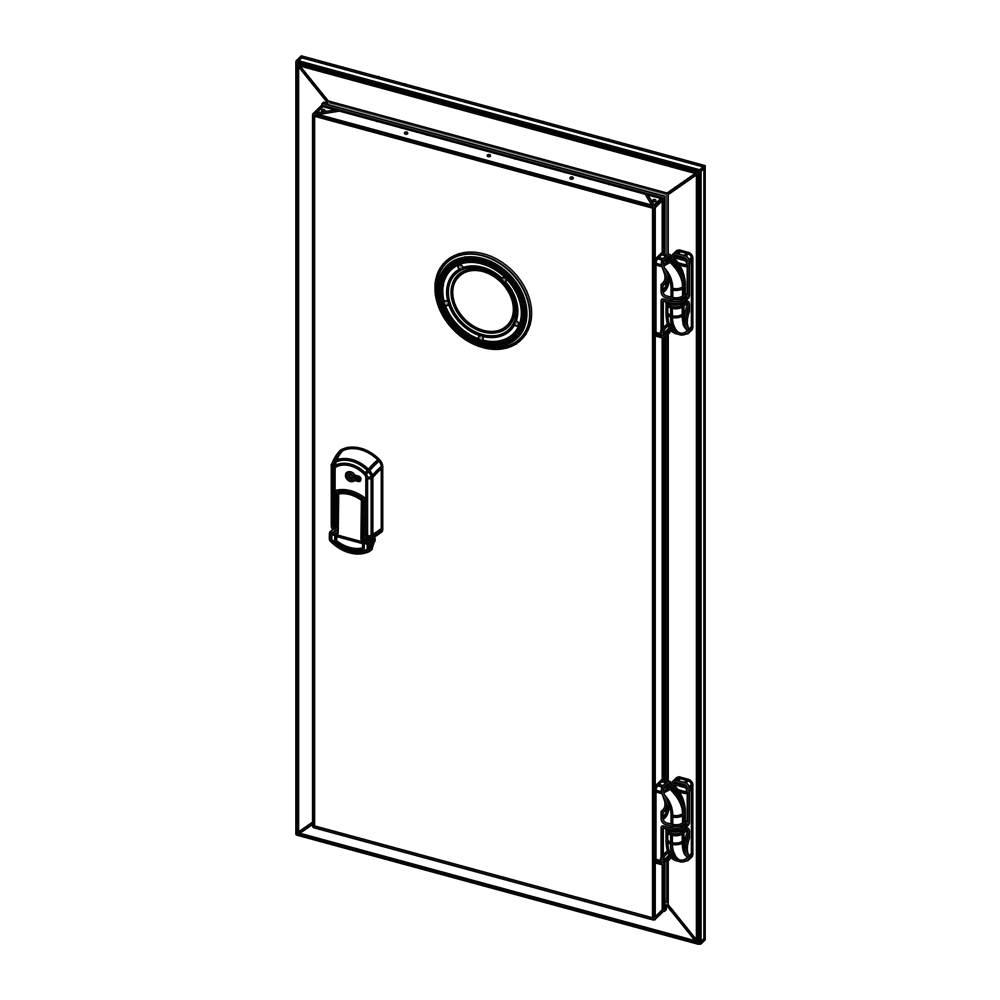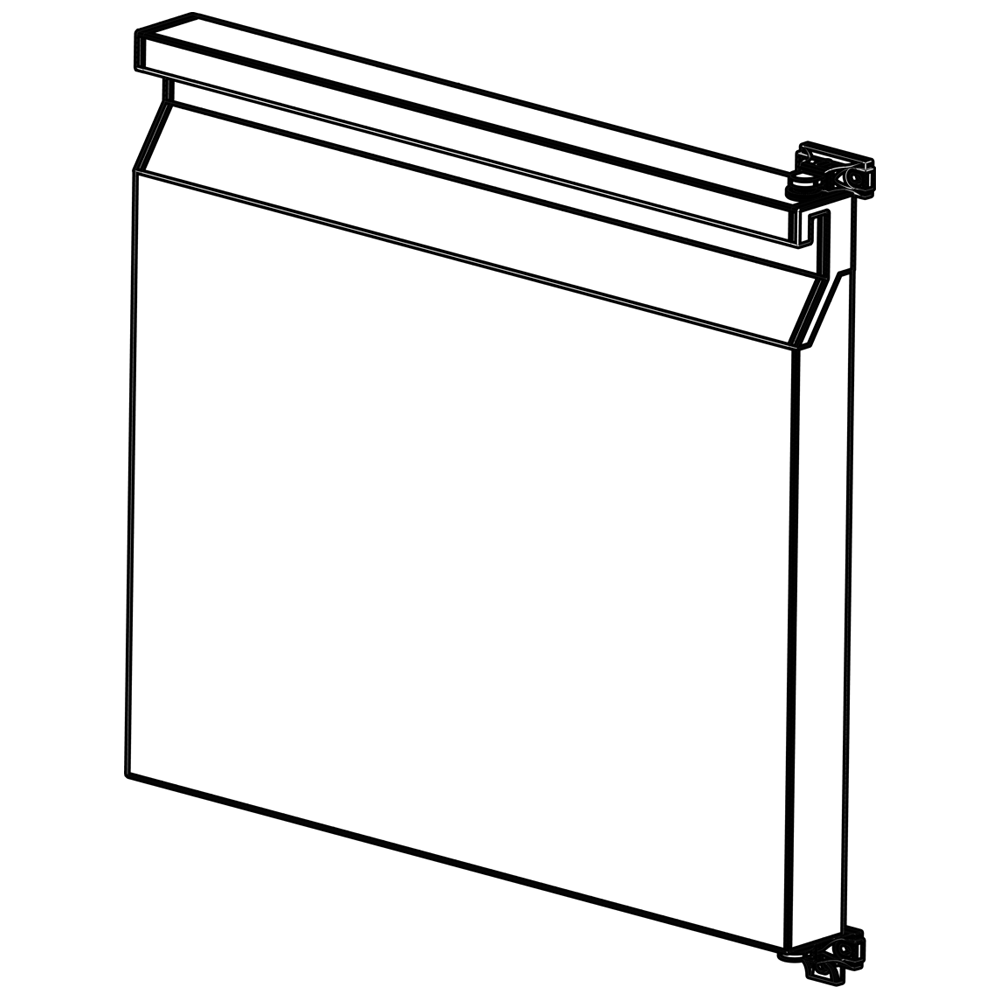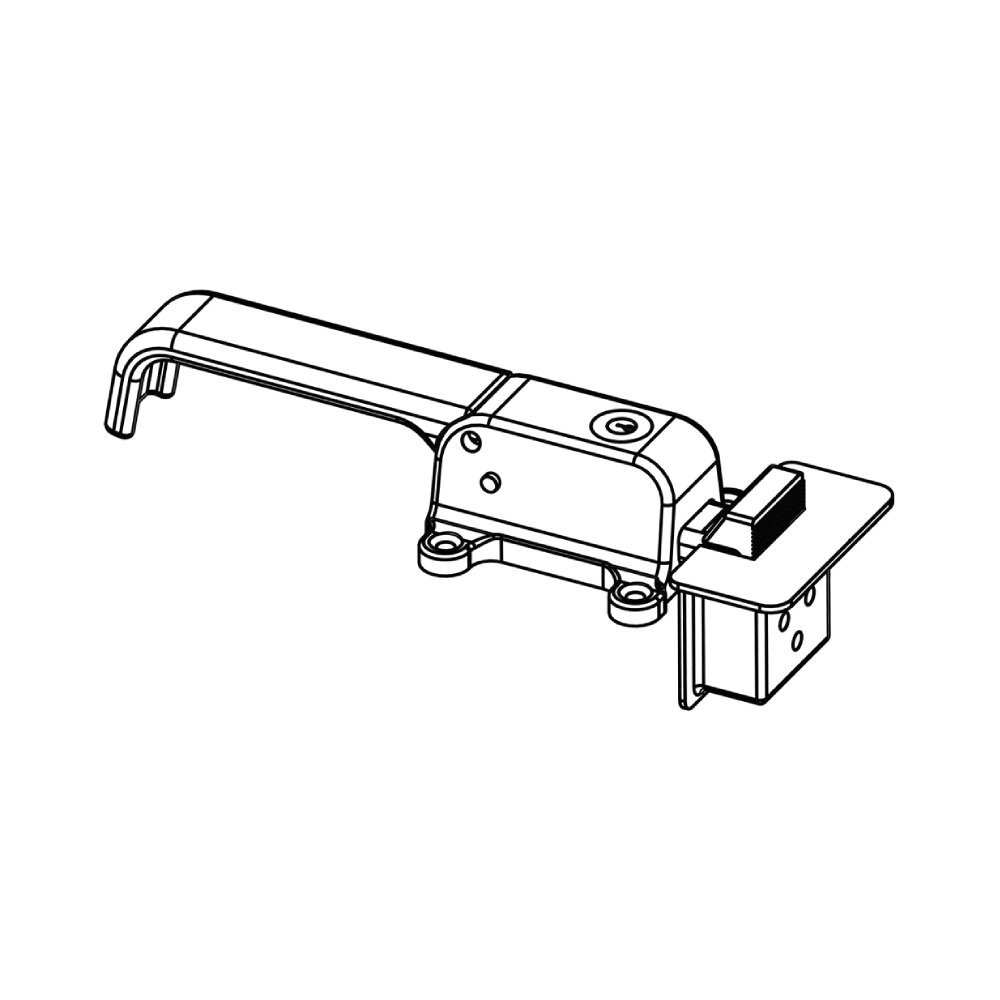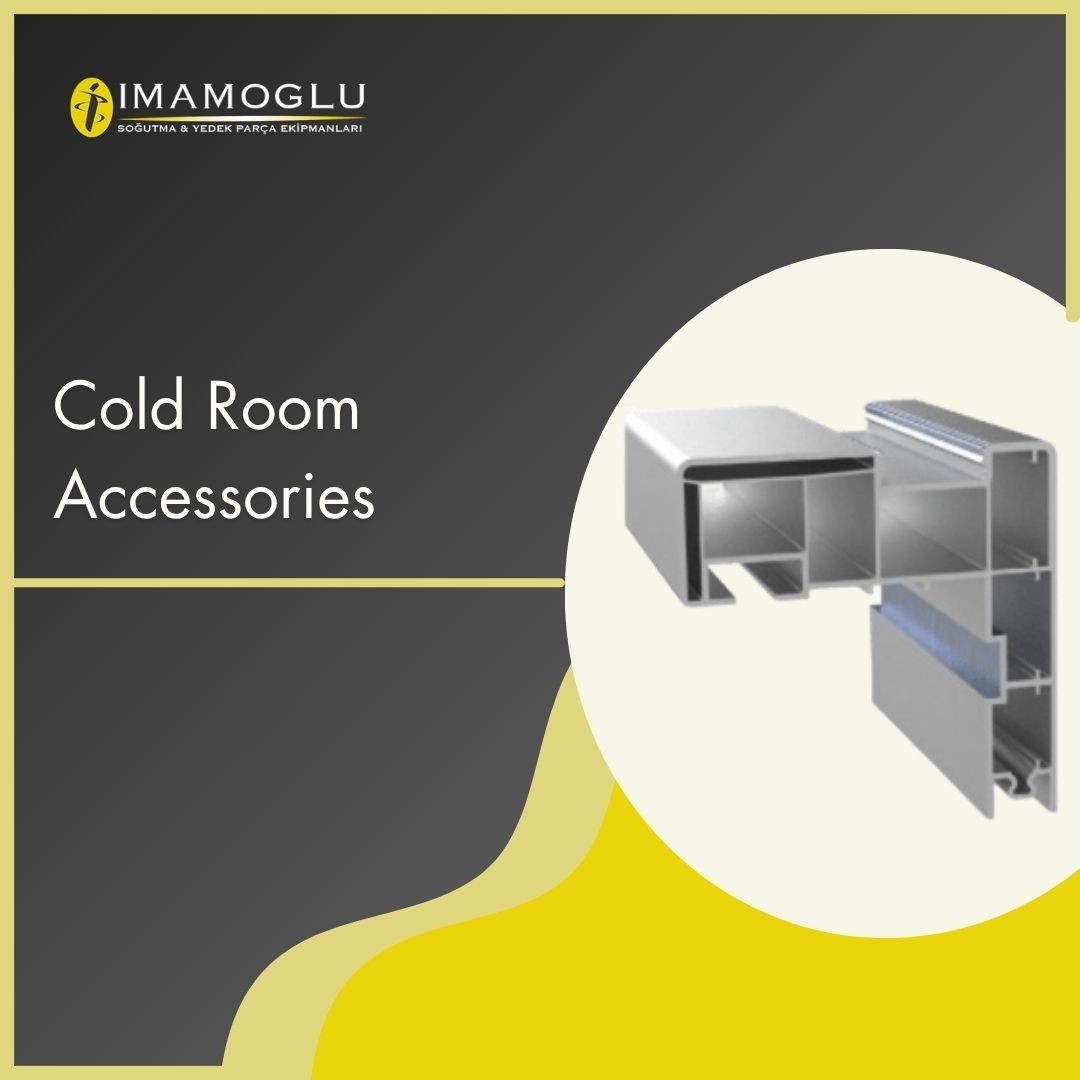Cold Room Accessories
What are cold room accessories and what material should they be made of?
Cold room accessories consist of various equipment that ensures efficient operation of cold storages. Among these, cold room doors occupy an important place and are usually made of durable materials such as stainless steel or aluminum. Doors are equipped with special seals and insulation materials to maintain the ambient temperature. Gaskets are usually made of rubber or PVC material and contribute to energy savings.
Shelf systems used in cold rooms also help to store products in an orderly manner. The shelves are manufactured from stainless steel or galvanized steel, ensuring that they are hygienic and durable. Cold room floors are generally reinforced with epoxy coating or polymer concrete materials. These floors are specially designed to prevent slipping and can be cleaned to hygienic standards.
Lighting systems are also important for cold rooms. LED lights that provide low energy consumption are preferred and these lightings are protected with waterproof coatings suitable for cold environmental conditions. Additionally, fans and air curtains are used to ensure air circulation and prevent hot air from entering. These accessories are usually made from metal alloys or plastic composites.
SWhen choosing cold room accessories, the durability of the materials used, their compliance with hygiene standards and their contribution to energy efficiency should be taken into consideration.
How do I choose the most suitable accessories for cold rooms?
There are several important factors to consider when choosing the most suitable accessories for cold rooms. The purpose of use of the cold room and the ambient temperature should be taken into consideration. For example, while hygiene and durability are among the most critical elements in a cold room used for food storage, more specific temperature control and safety systems become important in a cold room used to store medicine or medical supplies.
When choosing doors and insulation systems, highly insulated materials that will save energy should be preferred. Stainless steel doors often stand out for their durability and insulating power. Gaskets should be made of quality and flexible materials to prevent heat leakage. Rubber and PVC gaskets are generally preferred because they are effective at air sealing.
When choosing shelving systems, material and ease of use should be taken into consideration. Stainless steel shelves are widely preferred in the food industry due to their hygienic nature and long-lasting use. Arranging the shelves increases storage capacity and ease of use.
Lighting system selection is also an important factor. LED lighting that provides low energy consumption should be used in cold rooms and these lighting should be waterproof. To optimize air circulation, accessories such as powerful and quiet fans and air curtains should also be preferred.
When choosing accessories for cold rooms, it is necessary to consider criteria such as hygiene, durability, energy efficiency and suitability for the intended use. In this way, you can have a long-lasting and high-performance cold room system.
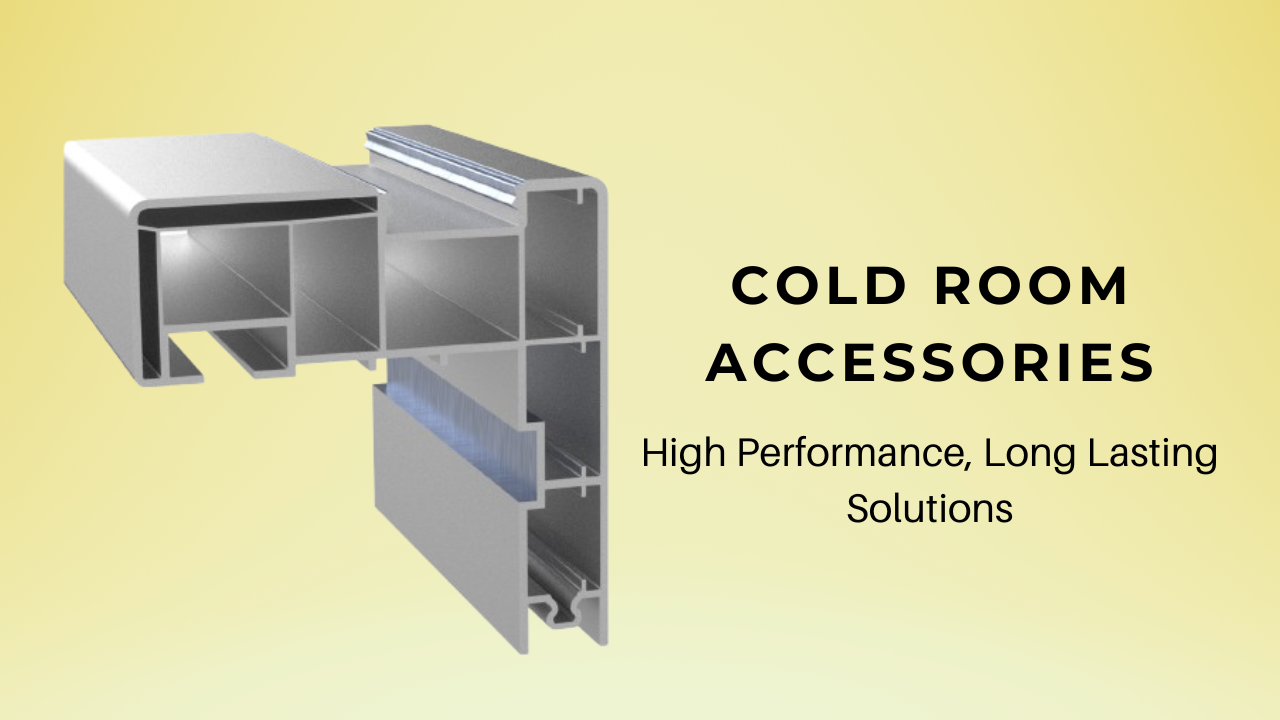
How do cold room accessories contribute to energy saving?
Cold room accessories contribute to energy saving in various ways, and the correct selection of these accessories allows cooling systems to work more efficiently. Some important factors that contribute to this contribution are:
Scold room doors and used insulation materials It plays a critical role in energy saving. High-quality insulation materials help keep cold air in and prevent warm air from entering the room. For example, used on doors gasketsIt maintains the temperature balance inside by minimizing air leakage when the door is opened or closed. Gaskets made of materials such as rubber and PVC reduce energy loss by providing this insulation.
Another important accessory is air curtainsiis. Air curtains mounted above the doors block the hot air coming from the outside and prevent the cold air inside from escaping. This saves energy by preventing the cooling system from operating continuously. Sciences It circulates the air inside regularly and ensures that the cold air spreads evenly, which reduces the cooling load.
LED lighting systems It is known for its low energy consumption. They consume much less energy than traditional lighting used in cold rooms and at the same time do not produce heat. This helps the cooling system work less and therefore saves energy.
Used in cold rooms automatic door systems It also contributes to energy saving. By minimizing the time the doors remain open, it prevents cold air from escaping and prevents hot air from entering. In this way, energy consumption is reduced.
Cold room accessories can significantly reduce energy consumption when used correctly. With good insulation, energy-efficient lighting and systems that regulate air flow, the performance of cold rooms is increased and energy costs are reduced.
Which are the most durable cold room door accessories?
The most durable cold room door accessories are stainless steel hinges and lock systems. These materials show high resistance to corrosion in cold environments and ensure the doors operate smoothly. Especially stainless steel lasts a long time without corrosion in humid and low temperature environments. Rubber and PVC seals are also important for durability. Thanks to their flexible structure, these seals provide excellent insulation in the doors and contribute to energy saving by preventing air leakage. Automatic door closing systems prevent the door from remaining open, preserving the cold air and increasing the mechanical durability of the door. When choosing accessories such as door handles and hinges, the material's resistance to abrasion ensures long-lasting use.
How can I understand the quality in cold room accessories?
The most important way to understand quality in cold room accessories is the durability and performance of the materials used. Accessories made from materials such as stainless steel, aluminum, PVC and rubber are generally considered high quality. Stainless steel is one of the most preferred materials in humid and low-temperature environments such as cold rooms, especially because it is resistant to corrosion. Accessories that provide thermal insulation increase energy efficiency, which is an indicator of quality. The fact that the seals on the doors provide a solid insulation and airtightness indicates that the accessory is of high quality. The fact that the products are made of hygienic materials and are easy to clean also determines the quality. Having international certifications (ISO, CE, HACCP) for accessories used especially in food and pharmaceutical storage areas increases the reliability and quality of the product. Longevity of accessories is also an important criterion; The fact that frequently used parts such as hinges, locks and shelf systems are resistant to wear and mechanical difficulties indicates quality. Energy-saving accessories also become a sign of quality by providing more efficient use in the long term.
How to install cold room shelving systems and which materials should be preferred?
Installation of cold room shelving systems requires careful planning and correct material selection. First of all, the layout of the shelving system should be planned, taking into account the dimensions of the cold room, the type and quantity of products to be stored. At this planning stage, a suitable layout should be determined so that the products can be placed regularly and the cold air flow is not blocked.
The preferred materials in shelving systems are generally stainless steel, galvanized steel and aluminum. Stainless steel is the most preferred material due to its high resistance to corrosion and hygienic properties. Galvanized steel is used as an economical alternative and provides resistance to rust thanks to the zinc coating. Aluminum is known for its lightness and durability, and is also easy to transport and simple to assemble.
During installation, it is important that the shelves are properly assembled and placed in accordance with the required load capacities. It should be ensured that shelving systems do not obstruct the air flow inside the cold room and use the storage space efficiently. Additionally, the fasteners used during the assembly process must be durable and rust-proof.
How are cold room accessories prices determined?
Prices of cold room accessories are determined depending on several factors. First of all, the quality of the materials used has a big impact on the price. Higher quality materials such as stainless steel and aluminum generally cost more. The features and functions offered by the product also affect the price; Accessories that save energy or include automatic systems may be more expensive. Quality of workmanship and complexity of design also increase costs. Well-known brands and reliable supply chains generally charge higher prices. Market demand can also affect prices; Products in high demand may be sold at higher prices.
How to install cold room accessories?
Installation of cold room accessories is done as follows: First, prepare the materials and tools required for assembly. This usually includes screws, dowels, mounting brackets and hand tools. Next, determine the internal layout of the cold room and the layout of the accessories. Place the shelf systems in their mounting locations and secure them by screwing the brackets. When installing doors, adjust the hinge locations correctly and place the door seals properly around the door. Make electrical connections safely when installing lighting systems. After assembly, perform final checks to ensure all accessories are working properly.


